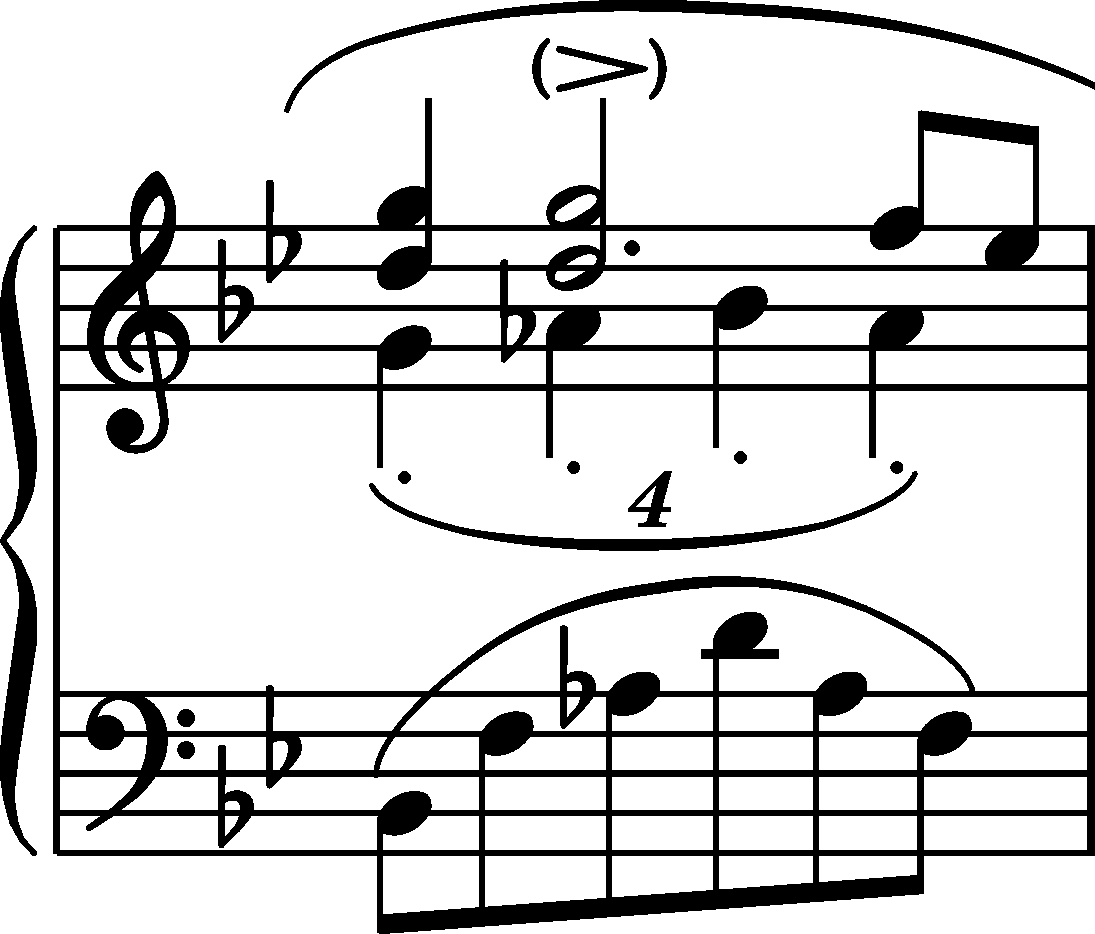



Issues : Inaccuracies in A
|
b. 164-165
|
composition: Op. 23, Ballade in G minor
..
In these bars, there are no flats to a category imprint: Interpretations within context; Differences between sources issues: EE revisions , Accidentals in different octaves , GE revisions , Inaccuracies in A , Errors repeated in FE |
||||||||||||||
|
b. 170-172
|
composition: Op. 23, Ballade in G minor
..
The available photograph of A gives no certainty as to the form of the staccato markings over the octaves in the middle of each of these bars, i.e. whether they are wedges or dots. It seems that the marks in b. 171 and 172 are almost certainly wedges, which is also possible in the case of b. 170, which, however, was not reproduced by the editions. In the main text we keep the dots present in our principal source, FE2, in spite of the fact that the marks were chosen (not necessarily accurately) probably by the engraver of FE. This solution is supported by the editorial consistency with respect to the dots over the quintuplet crotchets in b. 170-171 along with the arguments presented therein and by the aforementioned uncertainty of the interpretation of A on the basis of an imperfect photograph. category imprint: Graphic ambiguousness; Differences between sources issues: Inaccuracies in FE , Wedges , Inaccuracies in A |
||||||||||||||
|
b. 170-172
|
composition: Op. 23, Ballade in G minor
..
The interpretation of the three
The versions of the editions resulted from the marks in b. 170-171 having been unified; none of these changes resembles Chopinesque proofreading process. category imprint: Differences between sources; Editorial revisions issues: Inaccuracies in GE , Inaccuracies in FE , Scope of dynamic hairpins , EE inaccuracies , Inaccuracies in A |
||||||||||||||
|
b. 179
|
composition: Op. 23, Ballade in G minor
..
The individual voices of the polymetric R.H. figure are not strictly placed in any of the sources, regardless of whether with respect to each other or whether with respect to the L.H. quavers. According to us, as far as the mutual relations between the R.H. voices are concerned, the only imprecision in the notation of A (→FE), i.e. all voices falling on the a category imprint: Interpretations within context; Differences between sources issues: EE revisions , GE revisions , Inaccuracies in A |
||||||||||||||
|
b. 181-187
|
composition: Op. 23, Ballade in G minor
..
In A, the flats lowering a1 to a category imprint: Interpretations within context; Differences between sources issues: Omission of current key accidentals , FE revisions , Last key signature sign , Inaccuracies in A |

 1 and A
1 and A to the L.H. chord). What is more, the remaining necessary flats were inserted only in the first half of each of these bars. Moreover, in
to the L.H. chord). What is more, the remaining necessary flats were inserted only in the first half of each of these bars. Moreover, in 
 in
in  . In the Chopinesque version, the gap between the last a
. In the Chopinesque version, the gap between the last a